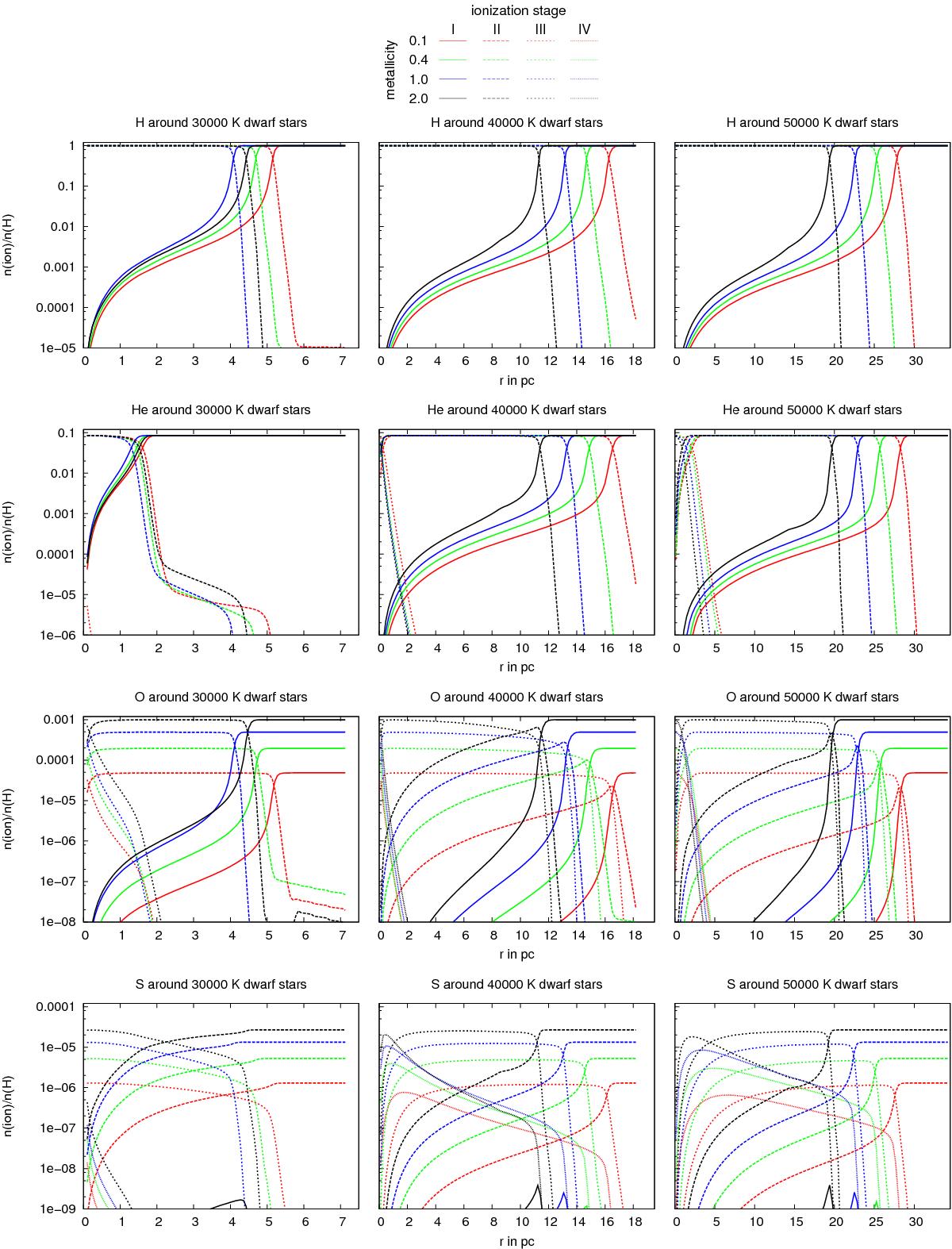Fig. A.7

Ionization structures of hydrogen, helium, oxygen, and sulfur of H ii regions around dwarf stars of effective temperatures of 30 000 K, 40 000 K, and 50 000 K at different metallicities (a homogeneous gas with a hydrogen particle density of 10 cm-3 and the same chemical composition as the central star is assumed). Because the number of hydrogen-ionizing photons varies only slightly for stars with the same effective temperature and luminosity class (Table 4), the larger hydrogen Strömgren radii obtained for lower metallicities are primarily caused by the larger temperatures of the gas, which in turn are caused mainly by the direct influence of the lower metallicities of the gas (see Fig. A.9).
Current usage metrics show cumulative count of Article Views (full-text article views including HTML views, PDF and ePub downloads, according to the available data) and Abstracts Views on Vision4Press platform.
Data correspond to usage on the plateform after 2015. The current usage metrics is available 48-96 hours after online publication and is updated daily on week days.
Initial download of the metrics may take a while.


